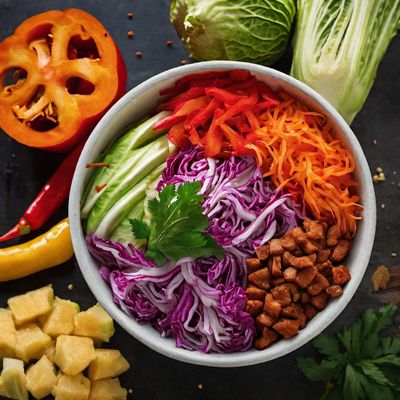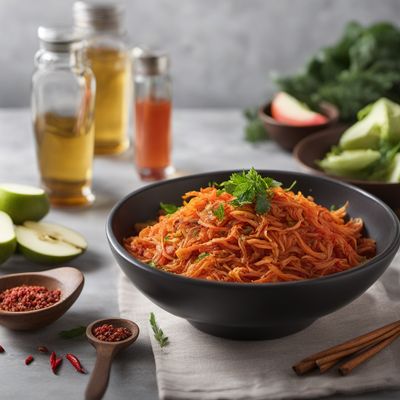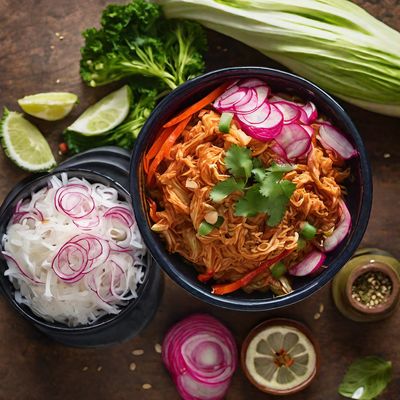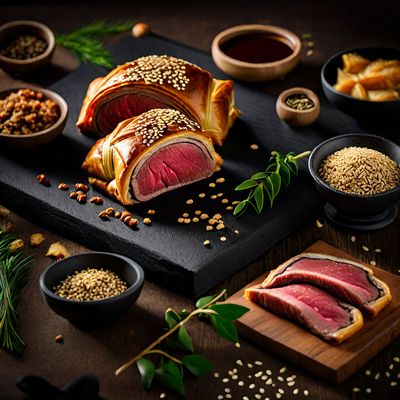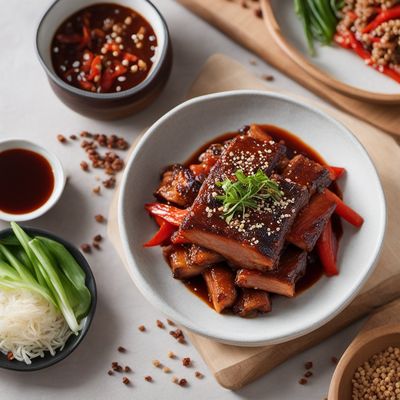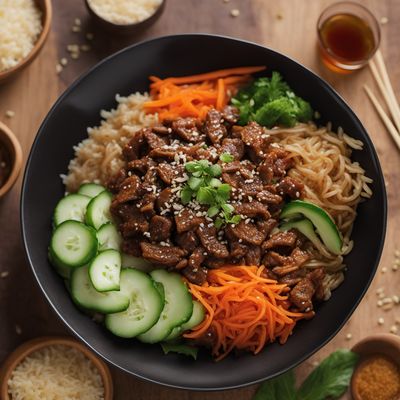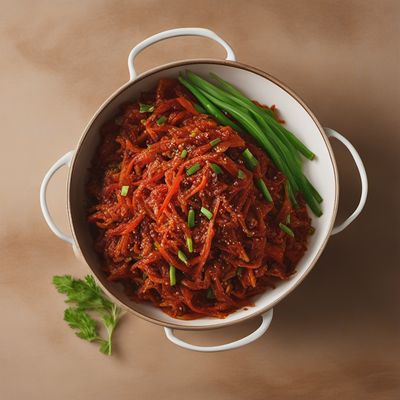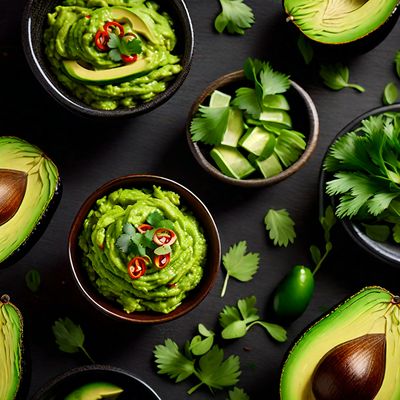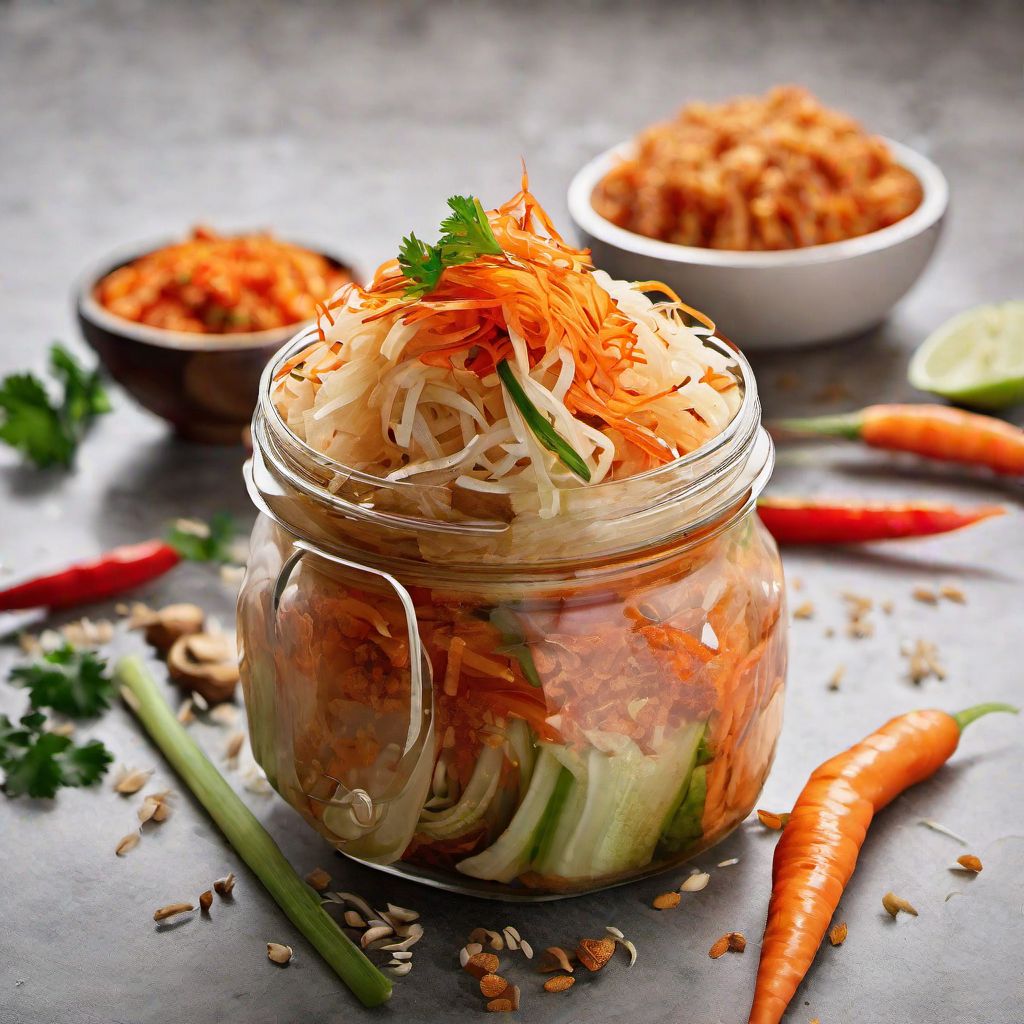
Recipe
Kimchi
Dutch-inspired Kimchi: A Spicy Twist on Traditional Fermented Cabbage
4.8 out of 5
In the context of Dutch cuisine, this recipe brings a fiery and tangy twist to the traditional Korean dish, Kimchi. Bursting with flavors, this Dutch-inspired Kimchi is a perfect balance of spicy, sour, and umami. It adds a vibrant and zesty element to any meal, making it a versatile and exciting addition to the Dutch culinary scene.
Metadata
Preparation time
20 minutes
Cooking time
0 minutes (fermentation time: 2-3 days)
Total time
2-3 days (including fermentation time)
Yields
4 servings
Preparation difficulty
Easy
Suitable for
Vegetarian, Vegan (if fish sauce is substituted with soy sauce), Gluten-free, Dairy-free, Low calorie
Allergens
Fish (in fish sauce), Soy
Not suitable for
Nut-free (contains peanuts in some variations), Soy-free (contains soy sauce), Paleo, Keto, Low-carb
Ingredients
While the original Korean Kimchi is typically made with Napa cabbage, this Dutch-inspired version incorporates local Dutch cabbage varieties. The spice level is adjusted to suit the Dutch palate, and additional ingredients like carrots and apples are added to enhance the flavors. The fermentation process remains the same, ensuring the authentic tanginess and health benefits of this beloved dish. We alse have the original recipe for Kimchi, so you can check it out.
-
1 large Dutch cabbage (about 2 pounds / 900g), finely shredded 1 large Dutch cabbage (about 2 pounds / 900g), finely shredded
-
2 carrots, julienned 2 carrots, julienned
-
1 apple, grated 1 apple, grated
-
4 cloves of garlic, minced 4 cloves of garlic, minced
-
1 thumb-sized piece of ginger, grated 1 thumb-sized piece of ginger, grated
-
4 tablespoons (60ml) Korean red pepper flakes (gochugaru) 4 tablespoons (60ml) Korean red pepper flakes (gochugaru)
-
2 tablespoons (30ml) fish sauce 2 tablespoons (30ml) fish sauce
-
2 tablespoons (30ml) soy sauce 2 tablespoons (30ml) soy sauce
-
1 tablespoon (15ml) rice vinegar 1 tablespoon (15ml) rice vinegar
-
1 tablespoon (15ml) sugar 1 tablespoon (15ml) sugar
-
1 teaspoon (5g) salt 1 teaspoon (5g) salt
Nutrition
- Calories (kcal / KJ): 80 kcal / 335 KJ
- Fat: 1g / 0.2g saturated
- Carbohydrates: 18g / 12g sugars
- Protein: 3g
- Fiber: 5g
- Salt: 1.5g
Preparation
-
1.In a large bowl, combine the shredded cabbage, carrots, apple, garlic, ginger, Korean red pepper flakes, fish sauce, soy sauce, rice vinegar, sugar, and salt.
-
2.Using clean hands, mix and massage the ingredients together until the cabbage starts to soften and release its juices.
-
3.Transfer the mixture to a clean glass jar, pressing it down firmly to remove any air pockets.
-
4.Cover the jar loosely with a lid or plastic wrap to allow gases to escape during fermentation.
-
5.Place the jar in a cool, dark place for 2-3 days, allowing the kimchi to ferment. Check the taste and texture daily until it reaches your desired level of tanginess and fermentation.
-
6.Once fermented, store the kimchi in the refrigerator to slow down the fermentation process. It can be consumed immediately or left to develop more flavor over time.
Treat your ingredients with care...
- Dutch cabbage — Make sure to finely shred the cabbage to allow for better fermentation and absorption of flavors.
- Korean red pepper flakes (gochugaru) — Adjust the amount according to your preferred spice level. Add more for extra heat or reduce for a milder flavor.
- Fish sauce — For a vegan version, substitute fish sauce with soy sauce or tamari.
Tips & Tricks
- To speed up the fermentation process, keep the jar at room temperature for the first 24 hours before transferring it to a cool place.
- Use gloves when mixing the ingredients to avoid staining your hands with the red pepper flakes.
- Adjust the fermentation time based on your taste preference. Longer fermentation will result in a tangier and more pungent kimchi.
Serving advice
Serve the Dutch-inspired Kimchi as a side dish with traditional Dutch meals like stamppot (mashed potatoes with vegetables) or as a topping for sandwiches and burgers. It adds a delightful kick to any dish and complements the flavors of Dutch cuisine.
Presentation advice
Present the kimchi in a small bowl or dish, garnished with a sprinkle of sesame seeds and fresh herbs like cilantro or parsley. The vibrant colors and enticing aroma will make it an eye-catching addition to any table.
More recipes...
For Kimchi » Browse all
For Korean cuisine » Browse all
More Korean cuisine dishes » Browse all

Godeungeo gui
Grilled Mackerel
Godeungeo gui is a traditional Korean dish that features grilled mackerel with a flavorful soy sauce and garlic marinade. This dish is perfect for...

Manduguk
Dumpling soup
Manduguk is a traditional Korean soup made with dumplings and beef broth.
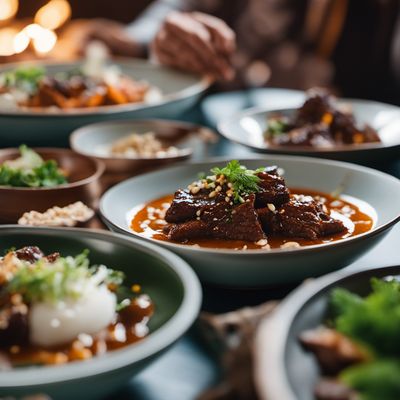
Galbijjim
Galbijjim is a Korean dish that is made by braising beef short ribs in a sweet and savory sauce. It is a popular dish that is often served at...
More Dutch cuisine dishes » Browse all

Fryske dúmkes
Fryske Dûmkes
Fryske dúmkes are a traditional Dutch cookie that originated in the province of Friesland. These small, crunchy cookies are made with a blend of...

Uitsmijter spek en kaas
Dutch ham and cheese sandwich with a fried egg
Uitsmijter spek en kaas is a Dutch dish that is made with bread, ham, cheese, and fried eggs. It is a hearty and filling dish that is perfect for...

Rijstevlaai
Rice Pie
Rijstevlaai is a traditional Dutch dessert that is made with rice pudding and a sweet pastry crust. It is a delicious and comforting dessert that...
